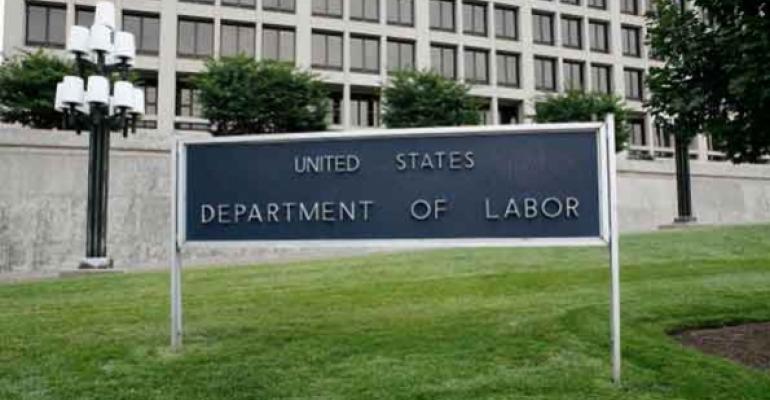The final version of the Department of Labor’s fiduciary rule could be released soon, as the White House has meetings scheduled with supporters and opponents alike.
The DOL unveiled its latest iteration of a fiduciary rule last October. President Joe Biden put it in the context of a broader administration-wide effort to curb “junk fees” in numerous industries. At the time, Biden claimed high (and potentially unsuitable) commissions in the retirement advice space could cause a 20% decline in funds for savers reaching retirement age.
A public comment period ran for 60 days after the proposal’s release, including a two-day public hearing in December. Now, the rule is with the White House Office of Management and Budget, which has meetings scheduled through the end of this month and into early April, according to federal records.
Meeting attendees include the CFP Board, which signaled its support in a statement last fall, arguing that previous rules do “not prevent advisors from taking advantage of gaps in the regulations to steer their clients into high-cost, substandard investments.”
Another supporter scheduled to meet with the OMB is the AARP, which joined the “Save Our Retirement” coalition in support of the rule last fall (the coalition includes the AFL-CIO, Better Markets, the Center for American Progress and the Consumer Federation of America, among other organizations).
“The release of this rule is a major milestone in the long fight to bring millions of Americans one step closer to a secure, dignified retirement,” a coalition statement read. “If the proposal is as strong as we have urged, this will prove to be a banner day for retirement savers.”
Representatives for Sens. John Fetterman (D-Pa.) and Catherine Cortez Mastro (D-Nev.) also have meetings scheduled.
Critics of the rule are also scheduled to plead their case to OMB officials, including Finseca, a trade organization for financial security professionals that opposed the proposal during OMB meetings last fall, and the Insured Retirement Institute.
IRI President and CEO Wayne Chopus said in a statement if the final rule resembled the proposal, millions of savers would “lose access to valuable lifetime income products and affordable professional guidance” as a result.
“Throughout this rulemaking process, DOL refused to acknowledge that its proposal will harm consumers,” Chopus said. “The proposal is functionally equivalent to the now-vacated 2016 rule, and like that rule, it will significantly harm retirement savers, especially lower- and middle-income workers, and further exacerbate the wealth gap for Black and Latino families.”
What the OMB meetings mean for the timing of the final rule’s release is unclear, with IRI Spokesman Dan Zielinski admitting the OMB is “never easy to predict.” Last fall, the DOL proposal came seven to 10 days after the OMB’s meetings on it concluded, but Zielinski stressed each rule was unique.
“There are times when OMB recommends that an agency make some adjustments, which could mean a longer period before the rule is finalized, depending on how extensive the recommendations are,” he said. “If no changes are recommended, it could happen much sooner.”
Time is of the essence for the Biden administration. If Donald Trump wins the White House in this year’s presidential election, it could endanger the final rule, depending on when it is published in the Federal Register. After that happens, the rule would have a 60-day waiting period before it goes into effect. New administrations typically put holds on previous administration’s rules that have not yet gone into effect by their inauguration; so if the rule was not published 60 days before the inauguration, a newly-elected Trump could put a hold on the regulation.
This is unlikely for the DOL fiduciary rule, as the final version will likely be released before that becomes a concern for Biden. But a new administration could also direct the DOL to redo or retract a rule via the Administrative Procedures Act, though a new administration would have to justify issuing a new rule to put in its place. The Biden administration opted not to enforce an ESG-related rule passed in the closing months of the Trump administration, pledging to revisit an ESG rule during its administration (which it did in 2022).
Even if it went into effect before an inauguration, it could still be vulnerable to the Congressional Review Act, which allows Congress to strike a rule if it was finalized at least 60 legislative days before a president was sworn into office in January. It’s unknown when that would be, but it could be in late May or early June, according to Morningstar Policy Director Aron Szapiro.
“This only matters if Republicans control the White House, and both houses of Congress,” he said. “Otherwise, there is probably no path to a CRA."

